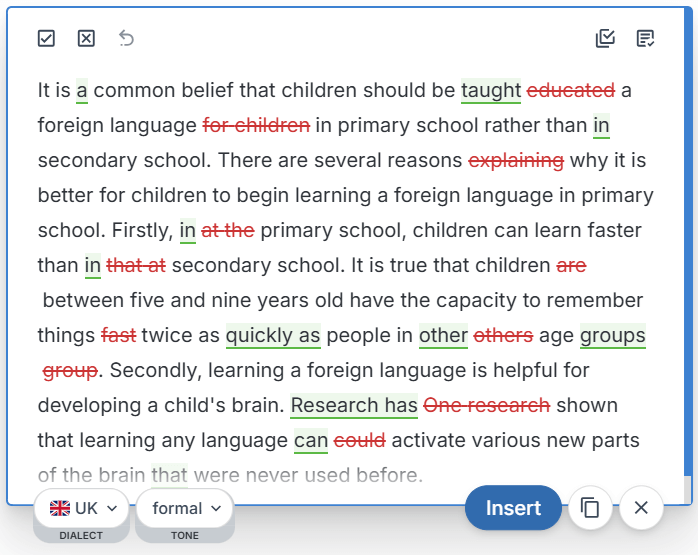What separates work that simply reports facts from research that changes the way people think? In many cases, it comes down to critical thinking – the ability to question assumptions, examine evidence from different angles, and communicate conclusions with clarity and depth.
For academics, it is more than a skill – it is the foundation for producing work that is credible, relevant, and capable of shaping both scientific understanding and real-world practice.
The following guidelines are adapted from a University of Southern California guide on applying critical thinking to research and writing. While originally focused on the social sciences, these guidelines can strengthen research in almost any field – helping you uncover hidden biases, challenge conventional views, and write papers that can withstand scrutiny and remain relevant over time.
Let us first take a closer look at what critical thinking means in this context.
What is critical thinking?
Critical thinking is defined as the intentional questioning and evaluation of information through reasoned, in-depth reflection and analysis. It goes beyond the mere understanding of information and involves questioning the source of information and the way it was produced and presented in order to identify possible subjectivity or bias in the research.
When investigating a research problem, critical thinking means questioning assumptions, examining the decisions underlying the study design, and considering the author’s possible motives. It also involves evaluating how the conclusions or recommendations were reached. In writing, critical thinking helps you combine information effectively and present strong, well-reasoned arguments.
Critical thinking is not a single step – it runs through the entire research and writing process. It guides you in choosing and defining your research problem, reviewing and interpreting the literature, selecting and applying methods, describing and analysing results, and considering what those results mean. From the initial idea to the final proofreading, it helps you make decisions that improve the quality, clarity, and relevance of your work.

See also: MIT study explores cognitive cost of AI dependence
Approaches that strengthen critical thinking
Make research more inclusive
Look beyond the limits of previous studies. Past research may have focused only on similar groups, narrow factors, or a particular context. By challenging these boundaries, you can include marginalised perspectives and build a more comprehensive, representative understanding of your topic.
Work with flexibility and creativity
Avoid a rigid, step-by-step mindset. Critical thinking benefits from intuition, openness to change, and willingness to try unconventional approaches. As new evidence emerges, revisit your thinking and adjust your conclusions.
Challenge assumptions and norms
Go beyond conventional viewpoints by challenging underlying assumptions and prevailing cultural norms. This can lead to new insights, support goals such as social justice and equality, and open the door to transformative outcomes.
Key areas to examine critically
Power dynamics
In many fields, especially in the social sciences, research is shaped by how power is created, shared, and maintained. Critical thinking helps you examine how historical, political, economic, and cultural forces influence relationships, institutions, and the flow of knowledge.
Your own perspective (reflexivity)
Be willing to question your own beliefs, assumptions, and experiences. Recognising hidden biases can help you interpret information more accurately and remain open to new ways of understanding.
Purposeful questions
Ask targeted, well-formulated questions to clarify what is known, what is unknown, and what might be hidden. Go beyond simple hypotheses and conduct a systematic, thorough investigation, always considering how your role as the researcher affects the study.

Critical thinking in literature review and discussion
As mentioned earlier, critical thinking is important throughout the research and writing process, but it plays a particularly important role in the literature review and discussion sections. These parts of a paper best illustrate the balance between engaging with external sources and applying your own analysis and interpretation.
When reviewing the literature, it is important to reflect on aspects such as:
– whether the research design establishes cause-and-effect relationships or provides clear insights into why certain phenomena occur or do not occur
– whether the methods used to collect data are consistent with and support the objectives of your study
– whether the assumptions underlying a particular conclusion are evidence-based and relevant to solving the research problem
– how each source may represent or omit certain perspectives
– whether the research omits voices or experiences that have an impact on how broadly the problem is understood and how its impact is perceived in society
Critical thinking is also important in the discussion section, in which you discuss the implications of your findings and explain their significance for addressing the research problem.
It goes beyond summarising the results, and requires reflection on why your study fills a gap or adds to knowledge in a way that may be useful for future research, policy, or professional practice. It also involves questioning your own assumptions about the significance of the findings while avoiding biased judgment.

See also: How to write a research paper in two weekends
Example questions to apply critical thinking
At its core, critical thinking is reflecting on your own thinking to improve the way you reason, analyse, evaluate, and communicate information, which leads to a deeper exploration of a topic.
This involves asking open-ended questions that encourage higher-level reasoning about a research problem. These questions challenge assumptions, examine evidence, evaluate how well arguments are supported, identify patterns in the findings, and consider how results might change if new factors were introduced.
The following questions help stimulate critical thinking throughout your research:
– Why is this research problem important, and to whom does it matter most?
– How might your perspective change if you were on the other side of the argument?
– What patterns or correlations are evident in the results?
– What factors might have influenced the results and what evidence would support alternative results?
– Are there other possible interpretations of the findings?
– How can the cause of the event or phenomenon under investigation be explained?
– Who will be affected by the author’s recommendations, and who might be left out?
– How and when could you determine if the recommendations are successful?
– In what ways could the findings from this study be applied to new situations?
– How does the study confirm or challenge your own understanding or experience of the problem?
– What are the main strengths and weaknesses of the study, and what is its overall significance?
Practicing critical thinking
Becoming a critical thinker takes practice. Assessing how well others have investigated a research problem requires confidence in your ability to engage with information, ask thoughtful “how” and “why” questions, and carefully analyse the author’s arguments and recommendations.
It also means examining your own beliefs and feelings about your writing, and being open to questioning yourself to build your self-confidence. The combination of these external and internal habits strengthens critical thinking skills and supports more effective research and writing.
InstaText: An editing tool that encourages critical thinking
Now that we have discussed the importance of critical thinking when researching and writing, we would like to introduce you to another way in which you can apply critical thinking, especially when writing your paper.
That is InstaText, an advanced editing assistant that encourages you to think about your word choice and the way your message is delivered through real-time, interactive feedback.
Unlike generative AI tools like ChatGPT, InstaText doesn’t write from scratch. Instead, it improves the text you provide – not just in terms of grammar and spelling, but also in terms of readability, clarity, and overall impact – through suggestions that you can accept or reject.

The fact that InstaText uses non-generative, advanced language technologies not only actively engages you in the writing process, but also helps you become a more critical thinker over time.
It also helps you meet the authorship and originality criteria of journals and academic institutions, which prohibit the use of AI-generated content but allow the use of tools like InstaText for language improvement.
If you are already a user, we recommend that you pay close attention to the edits so that you can get your message across as effectively as possible while improving your writing and cognitive skills.
See also: How InstaText improves writing and cognitive skills
We also recommend our blog where you can find more articles that can help you with your academic research and writing.
And don’t forget to install InstaText’s browser extension, which supports over 20 apps and platforms and allows you to seamlessly edit where you write without having to copy and paste or open a new tab.
And don’t forget to install InstaText’s browser extension, which supports over 20 apps and platforms and allows you to seamlessly edit where you write without having to copy and paste or open a new tab.

If you haven’t used InstaText yet, why not give it a try for free and see how it can add another layer of critical thinking to your work?

One more thing before you go: If you’re wondering how InstaText is different than ChatGPT and Grammarly, you might find this table helpful.
| Technology | Generative AI | Non-generative advanced language technologies |
| Definition | Creates new content based on input data | Analyses, processes, or improves existing content |
| Primary use | Content generation and creative tasks | Text analysis, editing, and comprehension tasks |
| Interaction method | Prompt-based: Yes ✅ (Users provide specific prompts to create new content.) | Prompt-based: No ❌ (Users input existing text for editing or analysis.) |
| Examples | ChatGPT DALL·E Midjourney Canva (Magic Write) Copy.ai | Google Translate IBM Watson Natural Language Understanding Google Cloud Text-to-Speech InstaText |
What academic users are saying about InstaText…
“This looks amazing. As a professor of Neuroscience who has gotten old publishing 75 papers, I wish InstaText were available during my times. Love it.”
— Lawrie Rajendran, University Professor
“InstaText is an excellent app that helps writing to be done rapidly to a high standard, while maintaining pace and momentum at the first draft and beyond.”
— Paul Jenkins, Film Director
“I switched from another software that did not help me write more like a native English speaker – it merely corrected typos, grammar, and punctuation. InstaText, on the other hand, makes your text engaging to read, coherent, and professional-looking.
Further, I feel that paragraphs corrected by InstaText look akin to what I see in top marketing and social psychology journals. It is a huge help for an academic writer because rather than focusing on making the text appealing, you can simply focus on what you want to say and build a logically unfolding narration.”
— Dr. Michał Folwarczny, Researcher




